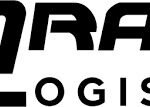Chronic diseases such as diabetes, heart disease, asthma, and hypertension remain leading causes of death and disability worldwide. According to the World Health Organization, chronic diseases account for approximately 74% of all global deaths. As populations age and lifestyle-related illnesses rise, the pressure on healthcare systems is mounting. Effective chronic disease management has become not only a clinical priority but a social and economic one. One innovation redefining this field is real-time monitoring—an approach that leverages connected health technologies to track patient data continuously and intervene proactively.
Understanding Chronic Disease Management
Chronic disease management refers to an ongoing, patient-centered approach aimed at improving health outcomes, minimizing complications, and enhancing quality of life for those living with long-term health conditions. Traditionally, management involved periodic visits to healthcare providers, reactive adjustments in treatment, and a reliance on patients to self-report symptoms accurately.
This episodic care model has several limitations:
- Delayed interventions due to infrequent clinical visits
- Inaccurate or missing patient data
- Limited insights into patient behavior and lifestyle
- High risk of hospital readmissions and emergency care
These gaps make it difficult to provide optimal care for conditions that fluctuate daily or hourly. That’s where real-time monitoring steps in to bridge the divide.
What Is Real-Time Monitoring?
Real-time monitoring in healthcare involves the continuous or near-continuous collection and analysis of patient health data using wearable devices, mobile health applications, and connected sensors. This data is transmitted to healthcare professionals who can track it remotely and respond in real-time to any anomalies or risk patterns.
Common Real-Time Monitoring Tools:
- Continuous glucose monitors (CGMs) for diabetes
- Smartwatches and fitness bands tracking heart rate, activity, and sleep
- Connected blood pressure cuffs and pulse oximeters
- Medication adherence tools with real-time reminders
- Remote spirometry for asthma and COPD
These tools form a critical part of a broader remote patient monitoring (RPM) ecosystem that empowers clinicians and patients with accurate, timely insights.
How Real-Time Monitoring Enhances Chronic Care
1. Early Detection and Timely Intervention
One of the most compelling benefits is the ability to detect issues before they escalate. For example, a sudden rise in blood glucose or an irregular heartbeat can prompt a notification to the care team, leading to immediate corrective actions—often before the patient is even aware of symptoms.
2. Data-Driven Personalization
Long-term trends gathered through real-time monitoring enable clinicians to tailor treatment plans precisely. This includes:
- Adjusting medication dosages
- Recommending lifestyle changes based on behavioral patterns
- Anticipating flares and episodes before they occur
3. Empowering Patient Engagement
Patients become active participants in their own care. Real-time feedback fosters self-awareness and motivation, helping individuals stick to their medication schedules, make healthier choices, and reduce risky behaviors.
4. Reducing Hospital Readmissions
Continuous monitoring has been shown to significantly lower hospital readmissions for chronic disease patients, particularly those with congestive heart failure and diabetes. Intervening early avoids costly, preventable ER visits and inpatient stays.
Role of IoT in Real-Time Monitoring Systems
The Internet of Things (IoT) plays a vital role in enabling real-time healthcare monitoring. By connecting medical devices, sensors, apps, and cloud platforms, IoT ensures a seamless flow of information between patients and healthcare providers. These networks can collect and analyze massive volumes of data while maintaining low latency and high availability.
With custom software development for IoT, healthcare providers can design specialized platforms that align with unique patient needs and integrate securely with electronic health records (EHRs). This ensures efficient, scalable, and HIPAA-compliant data processing pipelines—essential for delivering meaningful insights in real time.
Real-World Use Cases in Chronic Disease Monitoring
1. Remote Cardiac Monitoring
Wearable ECG monitors and smart patches track heartbeat irregularities and detect atrial fibrillation in patients with cardiovascular disease. Real-time alerts allow clinicians to contact patients immediately or even dispatch emergency assistance.
2. Diabetes Management Platforms
Continuous glucose monitors paired with smartphone apps deliver minute-by-minute glucose readings. If levels spike dangerously, alerts are triggered and shared with caregivers or medical staff.
3. COPD and Asthma Monitoring
Smart inhalers and portable spirometry devices help track respiratory patterns, medication usage, and environmental triggers. Patients can receive personalized alerts during periods of high pollution or allergens, reducing the risk of attacks.
4. Hypertension Control
Bluetooth-enabled blood pressure monitors can detect trends like white coat hypertension or morning surges. Doctors can adjust treatment remotely or schedule immediate follow-ups based on real-time insights.
Overcoming Challenges in Real-Time Monitoring
While the advantages are transformative, several challenges must be addressed for optimal implementation:
1. Data Privacy and Security
Medical data is highly sensitive. Ensuring encrypted transmission, secure storage, and access control is essential to protect patient information.
2. Device Interoperability
Many monitoring devices operate on different standards and platforms. Ensuring seamless data integration with EHRs and telehealth systems is a major hurdle.
3. Patient Digital Literacy
Not all patients are equally comfortable with using connected devices. Intuitive UI/UX design and caregiver training are crucial for adoption, especially in elderly populations.
4. Reimbursement and Policy Barriers
Although remote monitoring is gaining insurance coverage, reimbursement models vary by region. Policymakers must adapt faster to reflect the value of proactive care.
The Future: AI and Predictive Analytics in Real-Time Monitoring
Real-time monitoring is only the beginning. The true potential lies in combining it with artificial intelligence and machine learning. Predictive algorithms can:
- Forecast deteriorating conditions before symptoms manifest
- Stratify patients based on risk profiles
- Optimize clinical workflows by automating triage and prioritization
For example, AI can analyze thousands of data points from a cardiac patient to predict an imminent heart attack, allowing for life-saving preventive measures. Similarly, pattern recognition can detect early signs of diabetic neuropathy or kidney decline, long before lab tests would.
Real-Time Monitoring and Population Health
Beyond individual care, real-time monitoring contributes to broader public health goals. Aggregated data from thousands of devices can uncover trends in disease outbreaks, medication efficacy, or regional lifestyle impacts. Health authorities can use this data to:
- Improve resource allocation
- Design targeted health campaigns
- Respond more effectively to community health needs
Integration With Telehealth and Virtual Care
Real-time monitoring is a natural partner for telehealth services. In fact, it enhances virtual care by:
- Providing concrete data to guide virtual consultations
- Reducing dependence on in-person visits
- Improving continuity of care through shared dashboards
Clinicians can view patient vitals, activity levels, and medication adherence in real time during a virtual visit, leading to more informed and efficient decision-making.
Economic Impact and Cost Savings
Chronic diseases account for the majority of healthcare spending globally. Real-time monitoring reduces costs through:
- Fewer emergency interventions
- Reduced hospital admissions
- Improved medication adherence
- Lower long-term complication rates
Employers, insurers, and public health systems stand to gain from lower costs and improved population health outcomes.
Conclusion
Real-time monitoring is revolutionizing chronic disease management by turning reactive care into proactive, data-driven engagement. As wearable technology becomes more affordable and network infrastructure improves, we are heading toward a future where chronic conditions are not only manageable but predictable and preventable. For healthcare providers, payers, and patients alike, this means better outcomes, improved quality of life, and a more sustainable healthcare model.
FAQs
Q1: How does real-time monitoring improve chronic disease management?
Real-time monitoring enhances chronic disease care by providing continuous data, allowing for early detection, personalized treatment, and reduced hospitalizations through timely interventions.
Q2: What technologies are used in real-time health monitoring?
Technologies include wearable devices, mobile health apps, IoT-connected sensors, and cloud-based platforms that enable real-time data transmission and analysis.
Q3: Can real-time monitoring be used at home for chronic conditions?
Yes, many devices like blood pressure monitors, glucose sensors, and smart inhalers are designed for home use and transmit data directly to healthcare providers.
Q4: Is patient data secure with real-time monitoring systems?
Modern systems use encryption, secure APIs, and authentication protocols to protect sensitive health data and comply with regulations like HIPAA and GDPR.
Q5: What are the limitations of real-time health monitoring?
Challenges include device interoperability, data overload, digital literacy among patients, and evolving reimbursement models for remote monitoring services.
Q6: How is AI enhancing real-time chronic care monitoring?
AI enables predictive analytics by identifying patterns in health data, allowing for early warnings, automated triage, and more efficient care planning.
Related Reads
- Custom Fitness App Development: Build the Fitness App Your Users Actually Want
- Train Travel with Kids? No Problem! Order These Delicious Meals
- Upcoming Off-Plan Projects from Top Developers in Dubai
- Discover the Best Storage Facilities for Safe and Easy Item Storage
- The Importance of Agriculture in Uttar Pradesh
- Achieve a Sculpted Abdomen with Tummy Tuck Surgery



